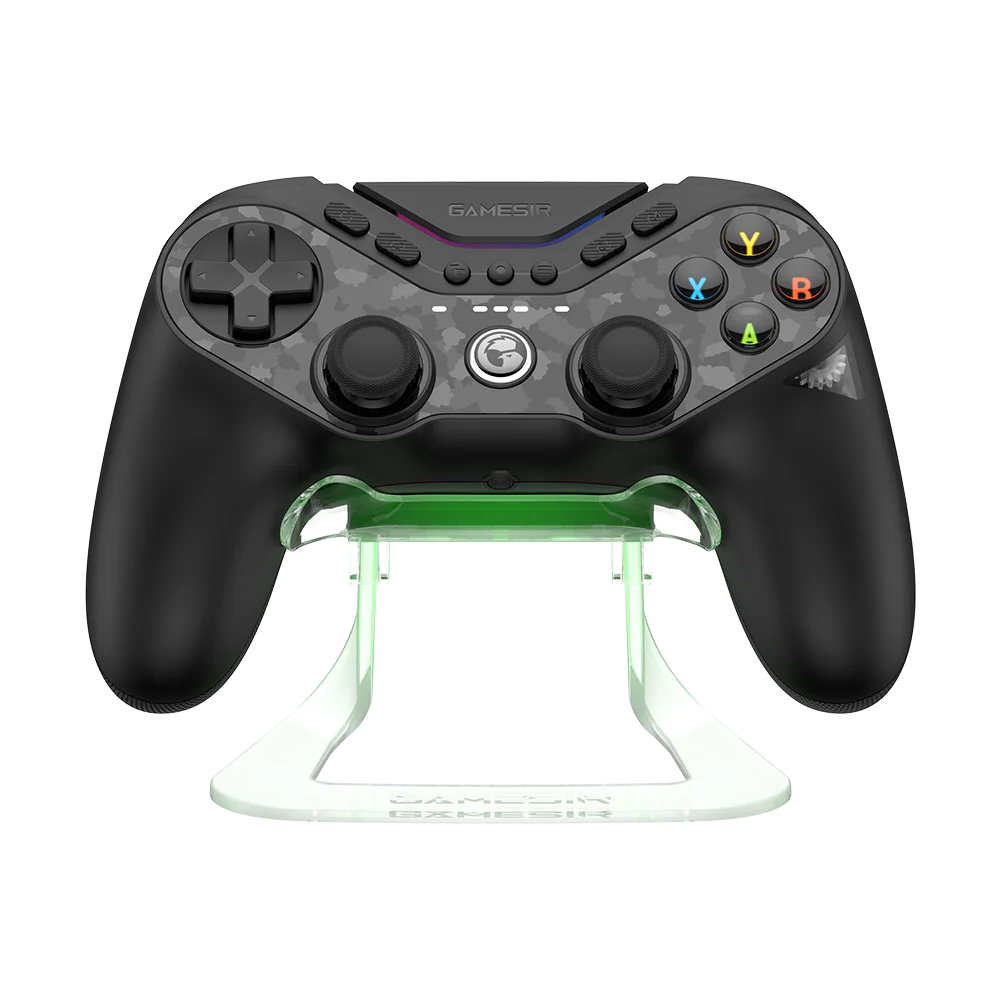
Taking the classic DualShock gamepad format to the next level, the GameSir Tarantula Pro boasts the latest TMR thumbsticks on top of a unique rotating face buttons that literally work like clockwork. It's held back by an overall cheap feeling (and looking) construction, though.
For
- TMR thumbsticks
- Swappable front buttons
- Hardware toggles
- Switch and PC functionality
Against
- Bland visuals
- Cheaper build than rivals
- Confusing shortcuts
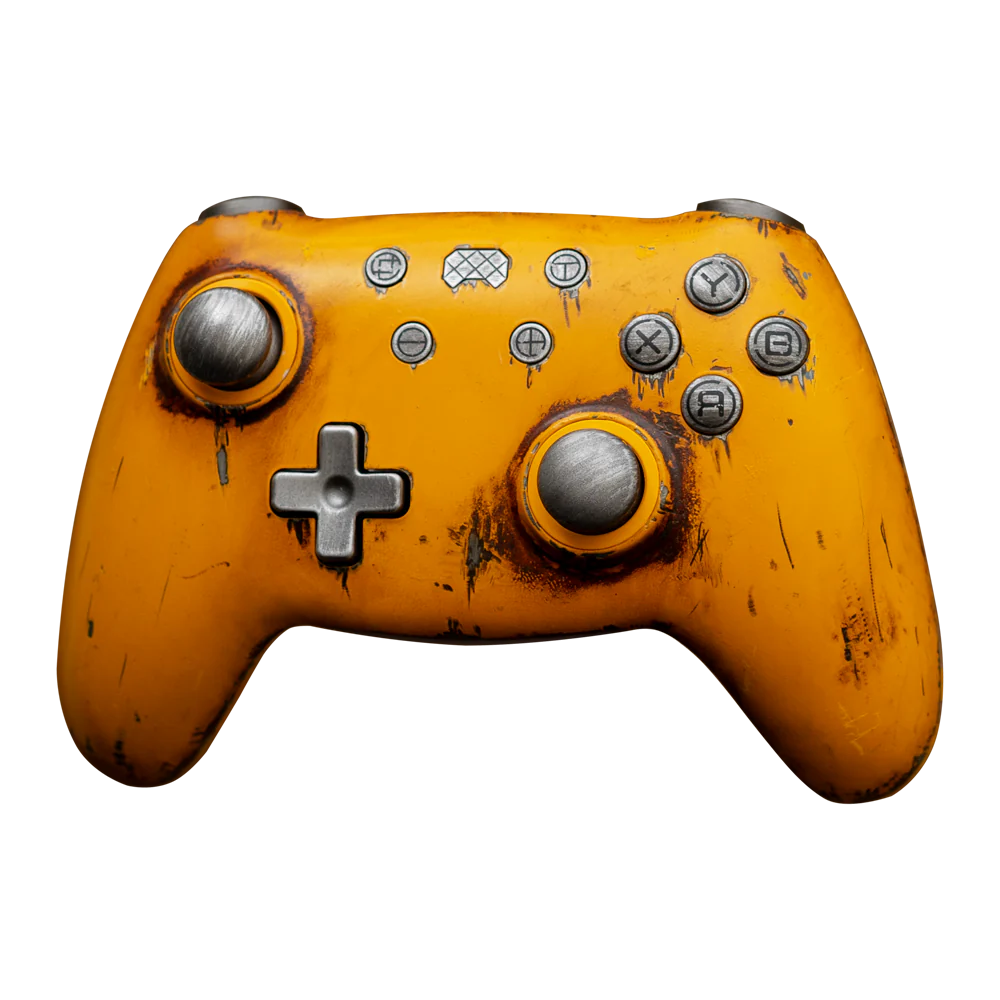
As one of the first TMR controllers in the world, the PB Tails provides accurate and responsive controls thanks to its amped up thumbsticks. This is a visually stunning, fully metal controller which stands out from the crowd. But if you're someone who likes to configure their controller, you will need to look elsewhere.
For
- TMR thumbsticks
- Hall effect triggers
- Impressive visuals
- Switch / Xbox button toggle
Against
- Lack of customization
- Heavy
- Expensive metal edition
Whether you want to game on PC, Switch, or on mobile, you can't go wrong with magnetic thumbsticks — and if you're going for magnets, you should go for TMR. Tunnelling Magneto Resistance is a new controller technology similar to the Hall Effect, which uses magnets to sense thumbstick movements. Unlike your standard Hall Effect thumbsticks, however, TMR boasts additional accuracy on top of less power draw, thanks to it picking up weak electromagnetic signals rather than the strong ones required by Hall Effect sensors.
Controllers with TMR thumbsticks should be considered some of the best Switch controllers available due to how they eliminate stick drift, an issue that has plagued many JoyCon users in the past. Two of my favorite controllers, the GameSir Tarantula Pro and PB Tails Metal Crush Defender, are some of the first controllers to take advantage of this new technology, delivering some of the best gaming performance I have seen on a controller. The more recent models of the GameSir Crush controller present a cheaper alternative to the limited edition metal model, with both TMR and 2.4Ghz support available in the newest version.
So, which should you buy? Here's all of the big differences you need to know between the GameSir Tarantula Pro and the PB Tails Metal Crush Defender, as well as the PB Tails Crush.
GameSir Tarantula Pro vs. PB Tails Metal Crush Defender: Specs
| Header Cell - Column 0 | GameSir Tarantula Pro | PB Tails Metal Crush Defender | PB Tails Crush |
|---|---|---|---|
| Price | $69 / £59 | $109 / £85 | $55 / £44 |
| Layout | DualShock ABXY (swappable) | Xbox ABXY | Xbox ABXY |
| Connection | Wired USB / Bluetooth | Wired USB / 2.4Ghz / Bluetooth | Wired USB / 2.4Ghz / Bluetooth |
| Battery | 1200mAh | 860mAh | 860mAh |
| Color | Black | Metallic yellow | White |
| Platforms | PC, Switch, Mobile | PC, Switch, Mobile | PC, Switch, Mobile |
| Weight | 11.5 ounces | 12.2 ounces | 8.8 ounces |
GameSir Tarantula Pro vs. PB Tails Metal Crush Defender: Price and availability
Compared to your average, first-party controller, the GameSir Tarantula Pro and the GameSir Crush are competitively priced. Compared to the most basic Xbox Series X controller, which retails at $59, an extra $10 gets you a significant performance upgrade if you opt for the GameSir Tarantula Pro — and for $79 you can even get a charging stand. The PB Tails Crush can be picked up for $4 cheaper from the PB Tails website.
The PB Tails Metal Crush Defender will set you back $109. In fairness, this is a special edition of the Crush, and you are paying for the unique battleworn visual design. The high price is one of the main weaknesses of this metallic beast, with its rivals proving that TMR can come much cheaper — this is a big reason to consider the Tarantula Pro over the Crush Defender, or at least opt for the plastic Crush instead.
GameSir Tarantula Pro vs. PB Tails Metal Crush Defender: Design
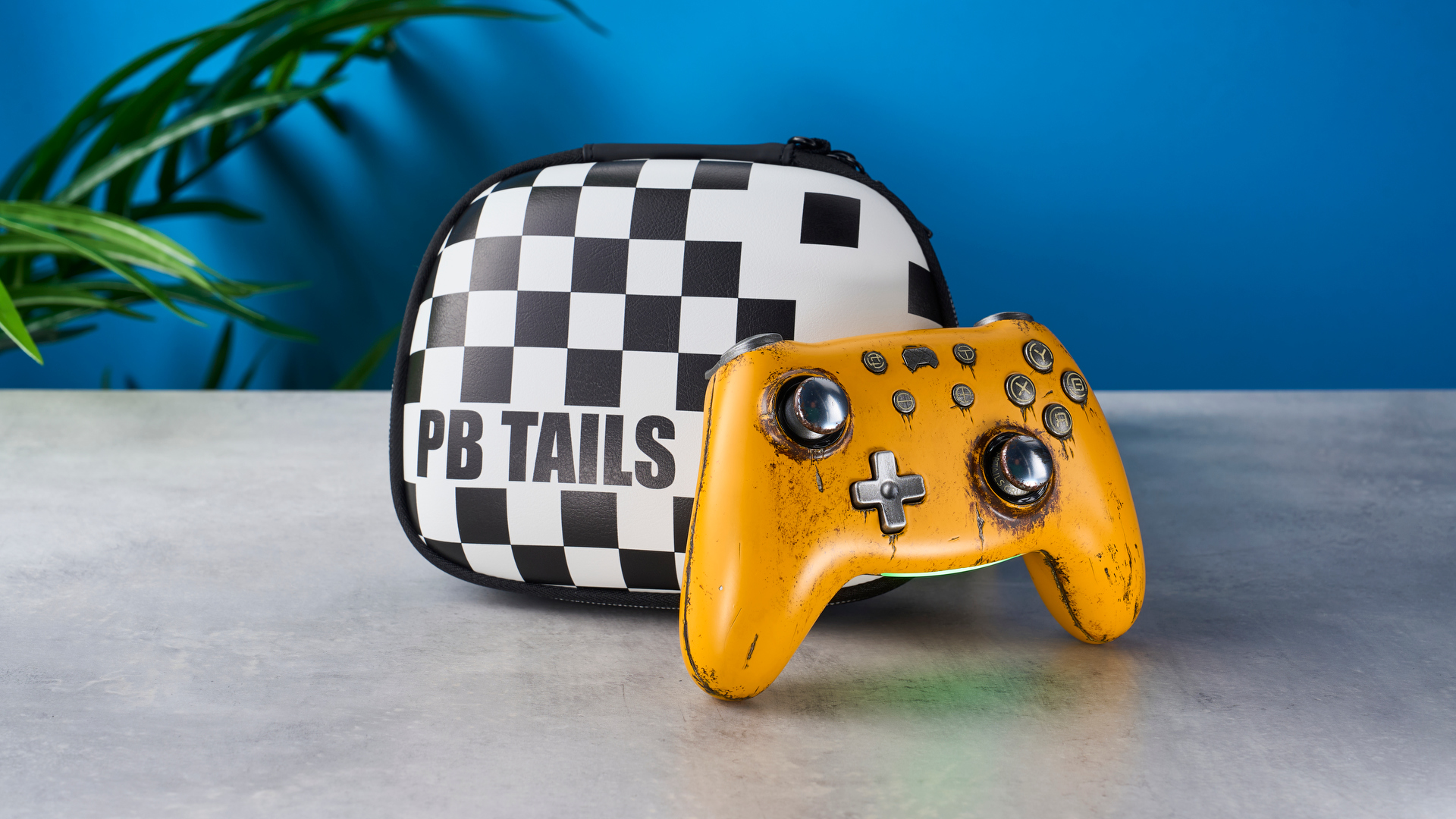
It's no competition to me which controller looks better. Whether you want to pretend you're a scavenger in a post-apocalypse, or a mechanic at a scrapyard, the Metal Crush Defender has you covered.
With a metallic, rusted finish over the bright yellow casing, of course the Crush Defender will not be to everyone's tastes. Both in concept and execution, though, I appreciate how unique the design is. The rust decals are physically present on the controller case, although they are glossy and smoothed over as to not impact grip. The zinc alloy case provides it with durability on top of style, but also comes at the cost of weight — at 12 ounces, it is noticeably heavy during longer gaming sessions.
The GameSir Tarantula is similarly weighty, at 11.5 ounces. However, it lacks in a lot of the visual charm of the Crush Defender, with a frankly ugly camouflage pattern in the middle. The plastic case of the Tarantula just doesn't come close to the Crush Defender, looking a little like a child's toy from a distance. Both controllers feel as substantial and durable as each other, although there was some minor durability issues with the Tarantula's case during my testing. It's safe to say that the Crush is the closest approximation to a first party controller— maybe GameSir bit off more than they could chew with the more complex DualShock design.
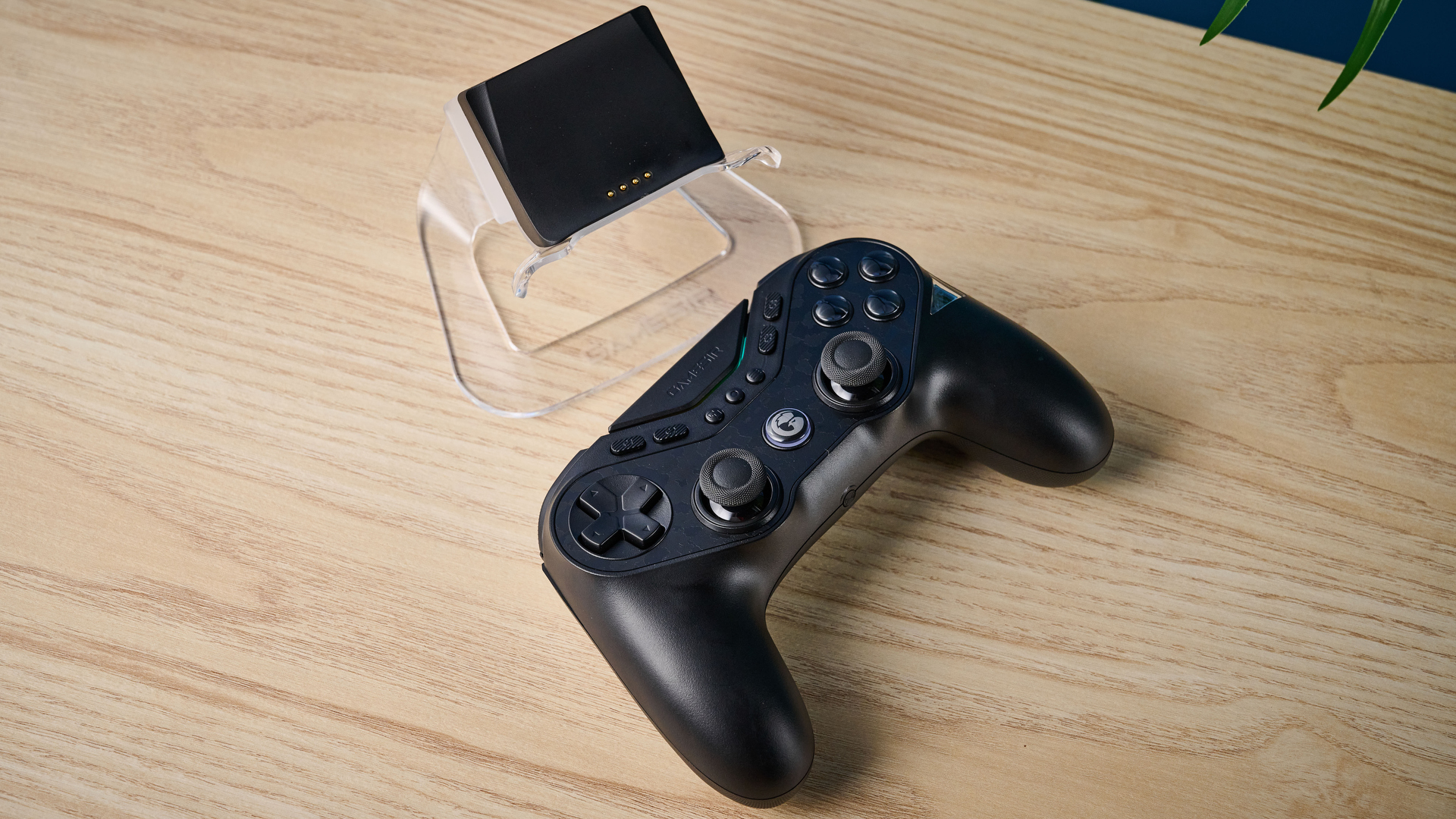
For those who prefer using DualShock controllers on PC, the GameSir Tarantula is bound to make you feel at home. It's a bit of a hybrid controller, with the classic symmetrical thumbstick position paired with Xbox ABXY face buttons. It seems like a bit more of a weird middle ground that the clearly Xbox-influenced Crush Defender, but my heart will always be with the DualShock-influenced Tarantula's shape and grip.
A big reason why I prefer the Tarantula is the button positioning. The Crush Defender nailed the Xbox's controller case shape, but the buttons felt all too close together. The A button in particular is right next to the groove running around the thumbstick, which is clunky and frustrating. No such issues with the Tarantula, though, with well placed buttons that feel great to use.
GameSir Tarantula Pro vs. PB Tails Metal Crush Defender: Performance
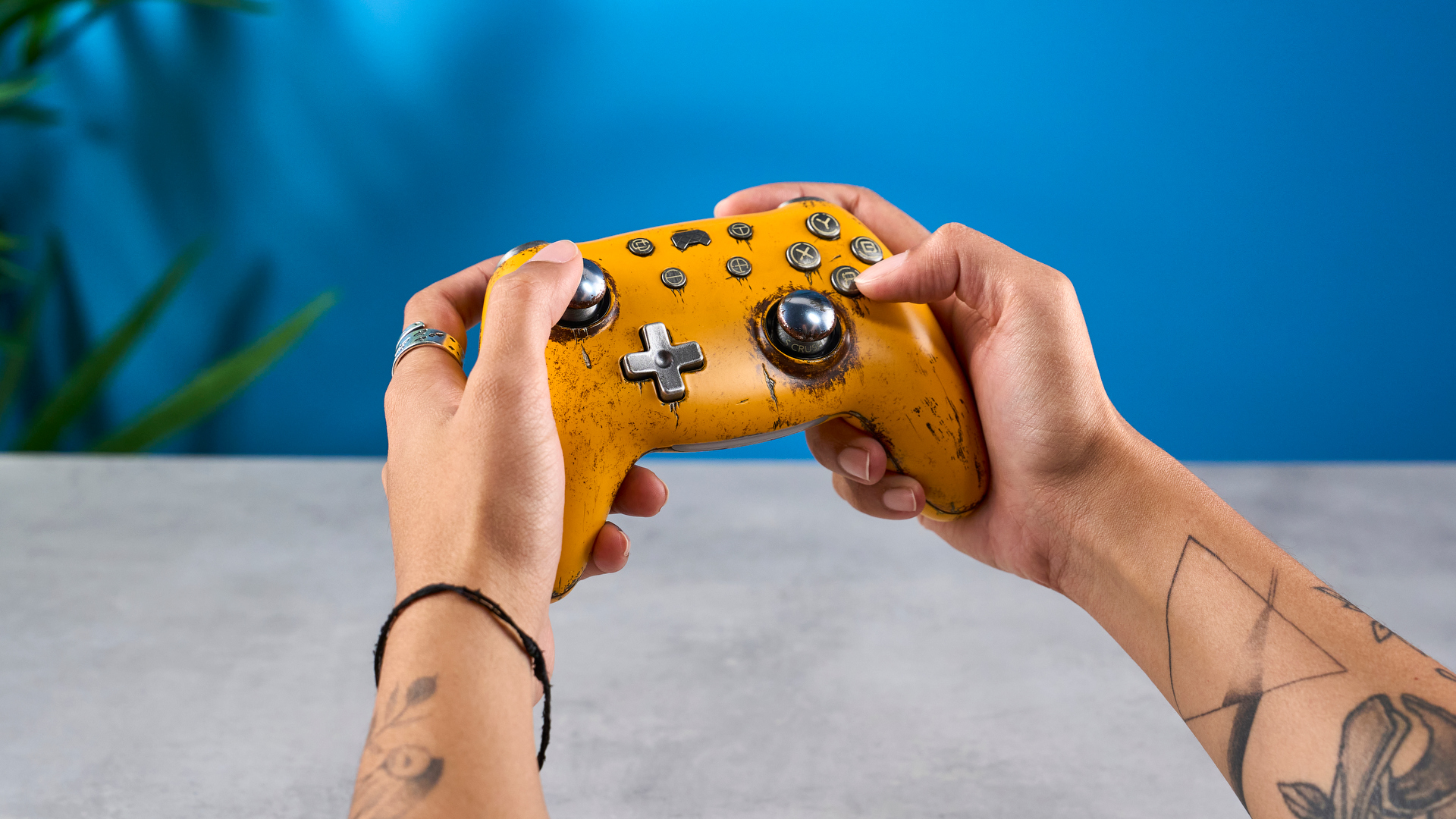
The TMR thumbsticks performed about the same on both controllers — low-power consuming and accurate, I was able to pull off much more accurate moves in games like Super Smash Bros. while playing on the Nintendo Switch. On PC, I tested both controllers in the new Silent Hill 2 remake, and I was really impressed by how good both controllers felt in a more casual, slower-paced setting — TMR doesn't prioritise performance at all costs, thanks to a smooth, low resistance feel to the sticks.
There are some minor tactile differences, however. The thumbsticks on the Crush Defender are much springier than on the Tarantula Pro, meaning that they can quickly spring back to the center point upon being released. The Tarantula doesn't have this issue, so I find it to be more consistent overall.

Besides from the thumbsticks, there are a few other gaming features that the Tarantula does well. One of my favorite aspects are the Hair Triggers, a mechanical toggle that you can switch on the back, which immediately turns the Hall Effect triggers into clicky buttons. This is great for shooters — I managed to get pretty far into a Halo 2 Legendary run relying on them for quicker shooting than traditional triggers. The ease of quickly switching these one were great for games that have both driving and shooting, like Grand Theft Auto 5 — a quick switch after a gunfight and I'm back to racing with a smooth pull of the trigger. No such joys on the Crush Defender, though.
The main, and only, advantage of the PB Tails Crush Defender in gaming performance is the 2.4Ghz wireless dongle. This allows for a more reliable and higher performing wireless connection over Bluetooth, which the GameSir Tarantula is limited by. The maximum polling rate on the Crush is an impressive 1,000Hz when using the dongle, while the Tarantula Pro can only achieve this while in wired mode.
GameSir Tarantula Pro vs. PB Tails Metal Crush Defender: Additional Features
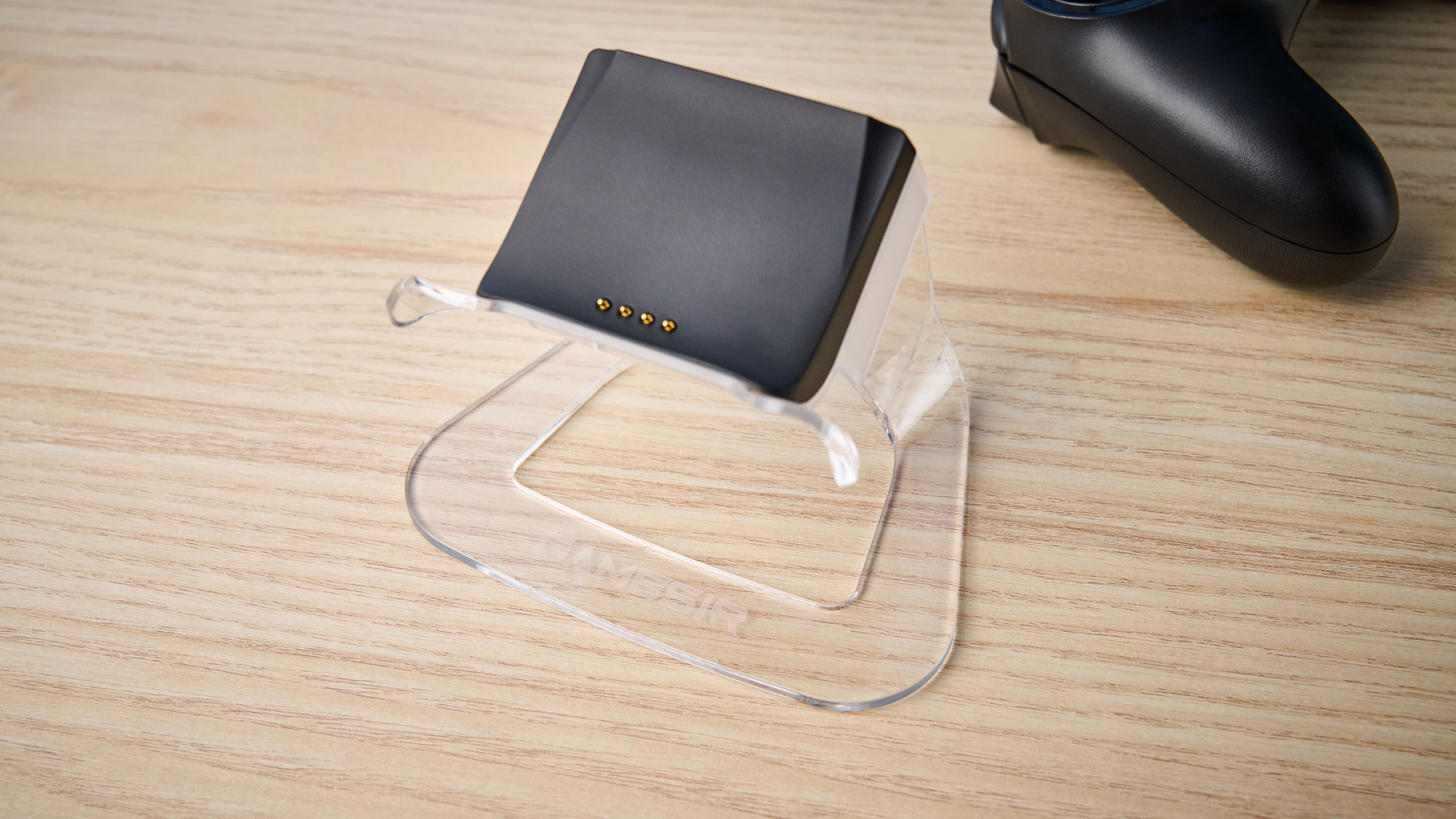
On the subject of wired mode, the cable on the Tarantula Pro is really below-standard. Rather than a braided cable, you will have to make do with a cheap-feeling rubberized plastic, which is disappointing to see on a $69 controller – no such problem on the Crush.
If you're only using the cable for charging, though, the Tarantula has a larger battery life at 1200mAh over the Crush Defender's 860mAh. For an extra $10, the Tarantula comes with a charging stand included— not the best looking accessory in the world, with a cheap clear plastic, but practical for charging the gamepad when not in use. With the Crush Defender, you're going to be stuck, more frequently, with the USB-C cable to charge.
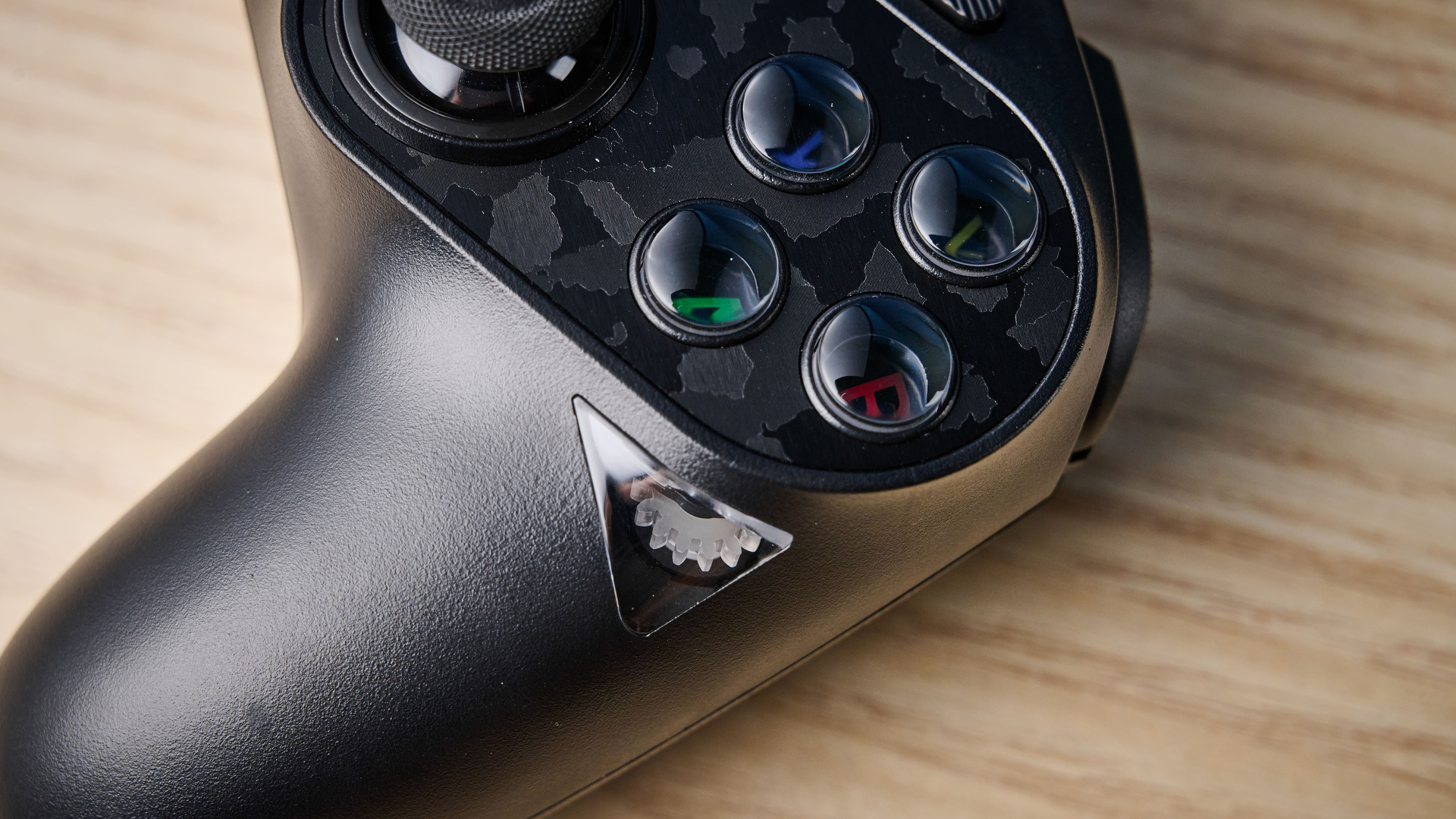
PB Tails has not released any companion software for the Crush Defender, meaning that you are unable to make any adjustments to the controller's performance. GameSir have released a companion app for the Tarantula, which comes with the ability to fully customize button bindings, trigger sensitivity, lighting and more.
The magnetic arachnid from GameSir is packed with features, including a motor which allows you to switch between an Xbox and Switch layout for the face buttons — a push of a shortcut keybind will rotate the A and B button like clockwork. This isn't just a party trick — as someone who uses the controller for both PC and Switch, it became second-nature to me and is great for keeping my buttons consistent with in-game prompts.
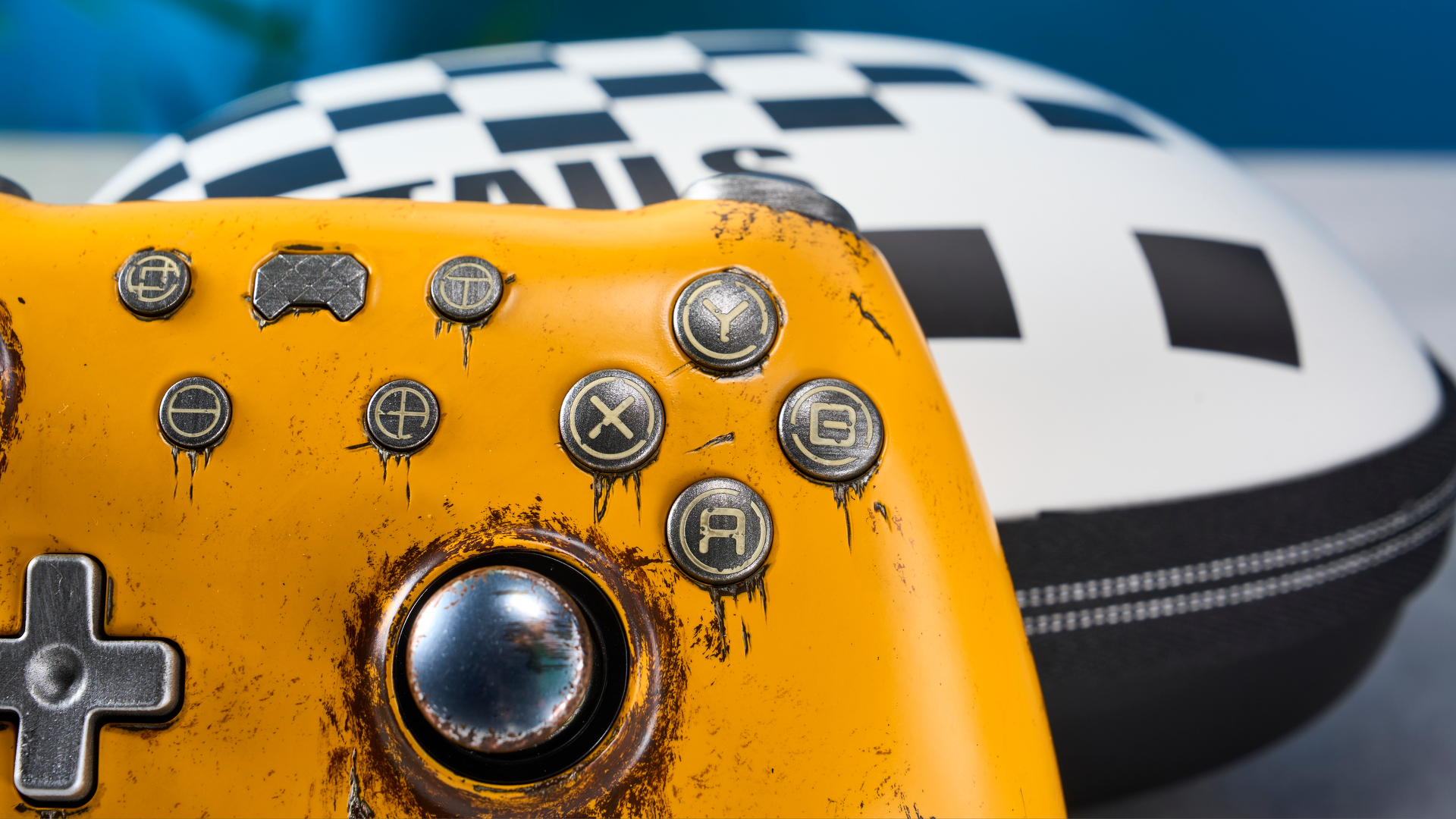
The Tarantula also comes with more buttons, with 4 bindable buttons in the middle. Meanwhile, the PB Tails has no additional rebinds. While this sounds good on paper, I found the process of binding them to be a little stressful — much of the Tarantula's configuration is done via some complex shortcuts, which I had to keep referring to the manual to learn. It isn't very intuitive, but I still appreciate the inclusion of customization over the complete lack of it — and I could always fall back on the companion app for more complex tinkering with settings.
GameSir Tarantula Pro vs PB Tails Metal Crush Defender: Which is best?
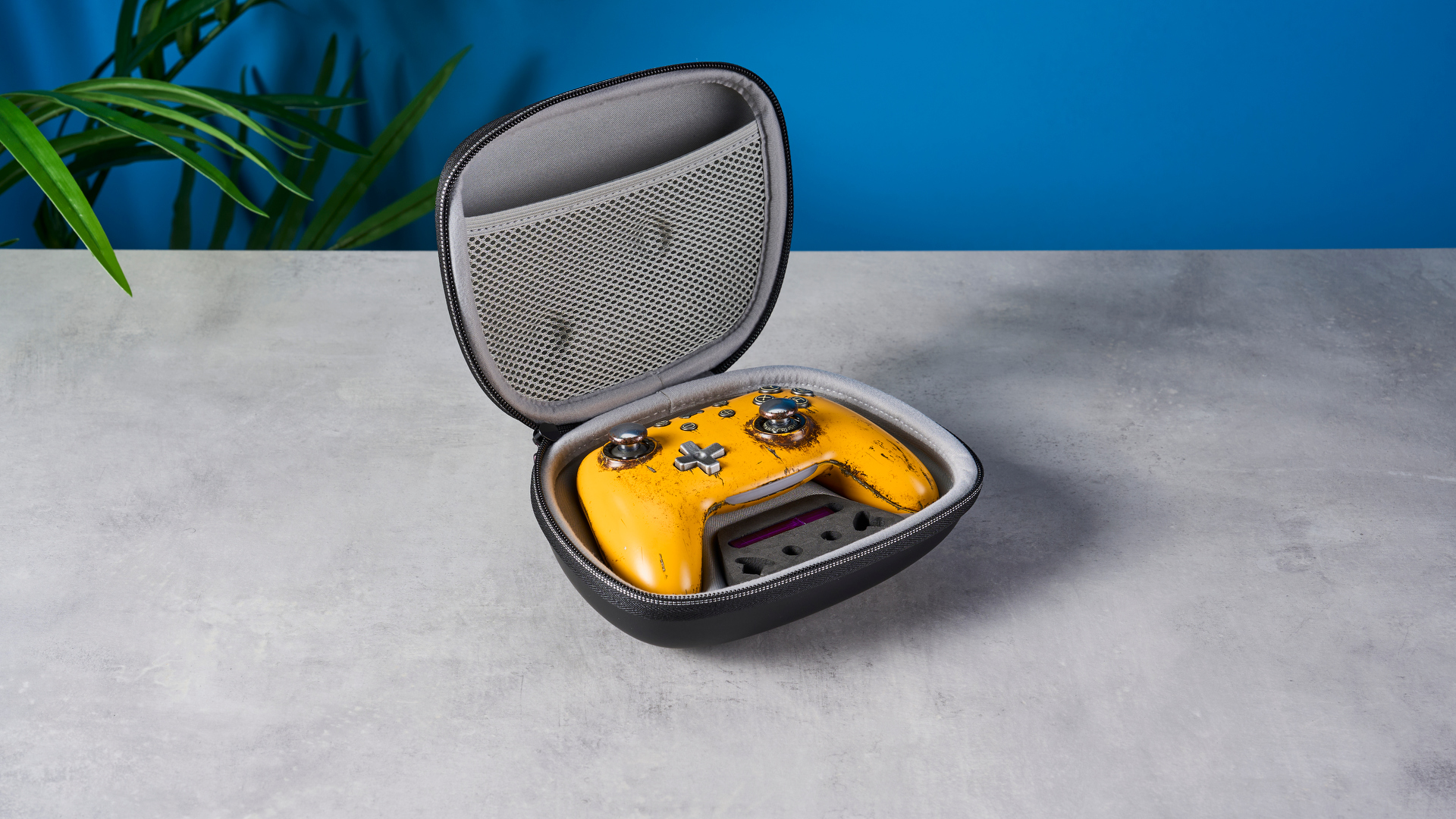
For your first TMR controller, its a tough matchup between the two. It really boils down to how keen you are on the features available, and how much you are willing to spend.
- If you want great looks, and amazing plug and play performance: The PB Tails Metal Crush Defender is simple, easy to use, and delivers high performance right out of the box with a higher polling rate of 1,000Hz. If you want this without the cost, or the rust, the PB Tails Crush has you covered. If you like the apocalyptic aesthetic of ''Fallout'' or ''Borderlands'', you won't be disappointed here.
- If you want a wealth of features, to fully configure your controller, and save some money too: The GameSir Tarantula Pro requires a little more work from you to get it tailored to your tastes, but the possibilities are much broader in terms of customization. It's feature rich, too, so you can play your best. You can really make this controller your own, and all of this is for $50 cheaper than the PB Tails Crush Defender.
It's safe to say that with the quality on display as this early stage of TMR tech, I am excited to see what the future brings to controllers. Stay tuned for more coverage!
More from Tom's Guide
Sign up to get the BEST of Tom's Guide direct to your inbox.
Get instant access to breaking news, the hottest reviews, great deals and helpful tips.

Eve is a Staff Writer on the Reviews team at Tom’s Guide. Her expertise centers around computing, and she loves testing out the very best high performance peripherals to help you make the right choice. With her experience working in IT and a love for gaming, she has an eye for function and efficiency— this is reflected in the time spent building and customizing her own desktop PCs. In her downtime, Eve is always on the lookout for new tech to give her a competitive edge in the latest games, or a boost in her daily productivity.
